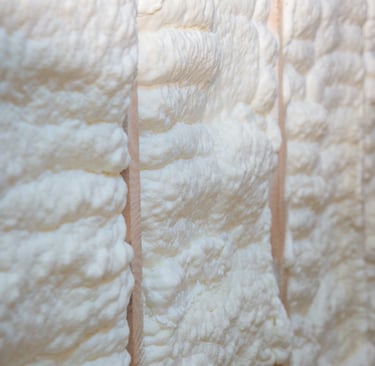What’s the Difference Between 1K and 2K Spray Foams? [2025 Guide]
When it comes to insulation, sealing, or adhesive projects, choosing between 1K (one-component) and 2K (two-component) spray polyurethane foams can make all the difference. Each system has unique properties, use cases, and pros and cons.
FOAMS


What Is 1K Spray Foam?
1K spray foam is a single-component polyurethane foam that cures by reacting with moisture in the air or on the substrate. It comes pre-pressurized in a can and is commonly used for:
Sealing gaps and cracks
DIY insulation
Bonding surfaces
Filling small cavities
Advantages of 1K Spray Foam
Easy to use – no mixing required
Lower cost – ideal for smaller jobs
Longer shelf life when unopened
Portable – can be carried and applied anywhere
Great for DIYers and occasional users
Limitations
Slower curing (depends on humidity)
Limited to small or medium gaps
Not suitable for large-scale insulation
Cure depth is limited in very deep cavities
What Is 2K Spray Foam?
2K spray foam is a two-component system consisting of Part A (isocyanate) and Part B (polyol/resin blend). These components mix at the nozzle during application, triggering a chemical reaction that causes the foam to rise, cure, and harden quickly and consistently.
Used in:
Wall, attic, and roof insulation
Subfloor bonding
Large-scale commercial insulation
Structural foam applications
Advantages of 2K Spray Foam
Fast curing (within seconds to minutes)
Higher strength and better dimensional stability
Greater expansion control and foam quality
Deeper penetration into cavities
Often has higher R-value per inch
Limitations
Requires special spray equipment or dual-can system
Higher cost per application
Shorter pot life once mixed
Less beginner-friendly
Head-to-Head Comparison: 1K vs 2K
When comparing 1K spray foam and 2K spray foam, the first major difference is in their composition. A 1K foam is a single-component system, pre-mixed in a pressurized can and ready to use. It reacts with moisture from the air or surface to cure. In contrast, 2K foam is a two-component system, requiring Part A (isocyanate) and Part B (polyol blend) to be mixed—usually at the nozzle—triggering a rapid chemical reaction.
Cure time is another important difference. 1K foam typically takes 1 to 24 hours to fully cure, depending on humidity and temperature. On the other hand, 2K foam cures within seconds to a few minutes, making it ideal for fast-paced or large-scale projects.
In terms of application size, 1K foams are best suited for small to medium-sized jobs, like sealing cracks, gaps, or doing basic adhesion. 2K foams are more appropriate for medium to large-scale applications, such as full-wall insulation, roofing systems, or subfloor bonding.
Equipment needs also differ. 1K foams come with a straw or gun adapter and don’t require additional tools, making them very user-friendly for DIYers. In contrast, 2K foams require a spray gun, hose setup, or dual-can system, which is more suitable for professionals or trained users.
When it comes to expansion and control, 2K foams generally offer more precise expansion and better foam quality. They also tend to have a higher R-value per inch—often in the range of 6 to 7 for closed-cell types, compared to around 3.5 to 4.5 for typical 1K foams.
For ease of use, 1K spray foam is the clear winner—it’s simpler, portable, and beginner-friendly. However, 2K foams offer higher strength, better thermal insulation, and deeper cavity penetration, which makes them more efficient for demanding construction work.
Lastly, the cost can vary significantly. 1K foams are affordable and ideal for occasional users, while 2K foams come at a higher cost but deliver superior performance and faster results.
Which One Should You Choose?
Choose 1K Spray Foam if:
You're doing simple gap filling
You want a budget-friendly solution
You're working in non-structural applications
You’re a DIYer or need a foam for occasional use
Choose 2K Spray Foam if:
You're insulating entire walls, attics, or roofs
You need strong bonding or high R-value
You want fast curing and professional results
You're working on commercial or high-performance jobs
Bonus: Hybrid Options Like 2C Aerosol Systems
Some manufacturers offer 2K foam in pressurized dual-can systems (like Todol, Colux, or HandiFoam). These combine the performance of 2K foams with portable packaging for field applications.
Great for:
Roofing adhesives
Vertical surface bonding
Subfloor applications with high strength
Final Thoughts
The choice between 1K and 2K spray foams depends on the size, speed, and performance requirements of your project. If you're sealing cracks or filling cavities, 1K foam is perfect. For insulation, roofing, or structural applications, 2K foam offers speed, strength, and superior thermal performance.
Still not sure which foam to choose? Drop a comment or contact us for tailored advice on your next project!
